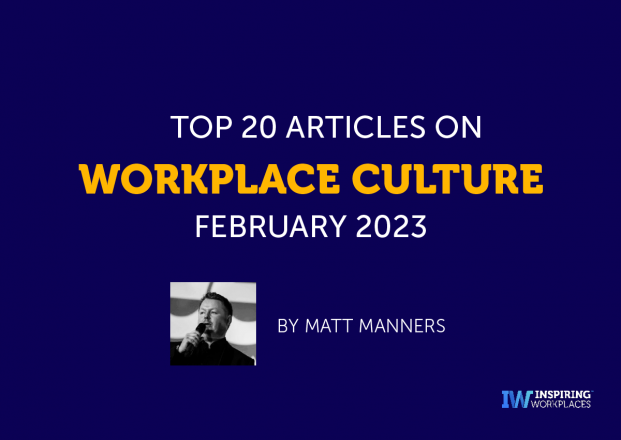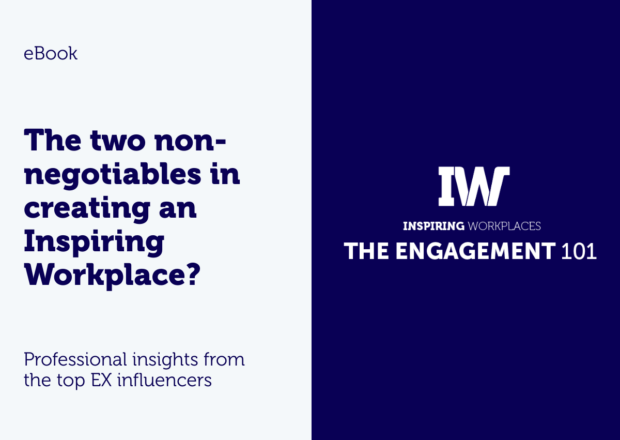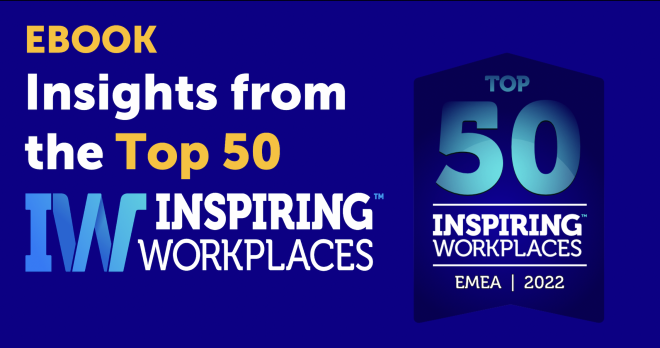
16th November 2023
Guest Blog: 4 Tips for Creating a Culture Worthy of Top Talent

Author: Rob Catalano, Chief Engagement Officer, WorkTango
While competitive salaries and workplace stability are well-known tools for attracting and retaining talented employees, these factors alone can’t create an exceptional workplace.
Even as business and society ebb and flow, the core of what employees want stays the same. Even more than dollars, employees want to feel seen, heard, valued, and supported in the work they do.
This is why it is critical for employers to be closely attuned to the needs of their employees. Employers must deliberately create a purpose-driven work culture that is aligned with intrinsic employee needs. Doing so is what will successfully attract and retain today’s top talent.
The following article outlines three methods any organization can utilize to build a great employee experience worthy of the best talent on the market – and convince them to stay, year after year.
1. Foster a culture of open communication
There’s no faster way to lose a good employee than to silence their voice.
Unfortunately, many of today’s work cultures have stifled employees, creating an environment where team members are afraid to speak their minds. A Gallup report shows that only 7% of U.S. workers strongly agree that communication in their workplace is accurate, timely, and open.
In order to create a healthy and thriving work culture, employers must give employees a voice and then actively listen to those voices.
Foster transparency and build trust
What will help employees feel comfortable enough to share their voices? A transparent culture. Be upfront and honest with employees and explain why key decisions are being made. Then, be open to employee feedback on those decisions. If feedback cannot be actioned due to certain business considerations, leaders need to take the time to explain why – and make sure to thank employees for voicing their opinions in the first place.
Empower confidential conversations
To create a safe and inclusive culture where employees feel comfortable sharing ideas, it may be best to launch a series of confidential surveys. Confidential surveys run by a third-party neutral provider are an easy way for employees to share their thoughts and spark meaningful, ongoing dialogue without the fear of “Big Brother” influencing their responses.
2. Support continuous employee success
How do organizations empower their employees and help them feel fulfilled in their jobs?
The answer is not through annual performance reviews. In the past, annual reviews were a once-a-year-tick-the-box process aimed at recapping 12 months of good, bad and everything in between in an hour-long conversation. Annual reviews have not proven to be effective when it comes to driving continuous real-time performance improvements, or building an extraordinary employee experience and workplace culture; in fact, 90% of HR leaders say annual reviews don’t give them accurate results.
An alternative (and more modern) approach to annual reviews is building a culture that revolves around continuous feedback. A continuous feedback culture is one in which supervisors empower employees through frequent, meaningful development conversations; where simple weekly sync-ups are focused on growth and business impact; and where back-and-forth dialogue builds better manager-employee relationships.
Here’s how to implement a continuous feedback and development culture in your organization:
Align employee goals with organizational objectives
It’s not enough to set individual goals for team members. Employee and organizational goals need to align to contribute to personal impact and positive business outcomes. Once set, organizations should collaborate and share quarterly goals across teams or department levels.
Ensure conversations happen frequently – not once a year
One of the biggest issues with traditional performance reviews is that they don’t address issues as soon as they surface during a quarter. And by the time annual performance conversations ultimately do take place, it’s far too late to take action that could have shifted outcomes in a meaningful way eight months earlier. Ongoing performance conversations give employees real-time feedback and help them understand how they’re doing; help establish and track goals; and contribute to professional development.
3. Create a positive work culture
Appreciation and recognition goes a long way in the workplace when it comes to employee engagement, retention and motivation. In fact, a recent report showed that when employees are recognized at work, they are 3x as likely to feel connected to their work culture and over 30% more likely to want to stay in their jobs for 5 or more years. Another study showed that 60% of employees are more motivated by recognition than money.
Recognition represents a simple, yet powerful, way employers can create a culture that motivates, celebrates, and empowers its people. So for employers looking to create a work culture that recognizes and rewards team members, here are three ways to get started.
Give recognition in real time – not once a year
Demonstrating an appreciation for and commitment to employees should be a regular part of any given week at work. This means noticing employees and consistently giving them clear, specific praise for what they bring to the table. Not only does giving credit where it’s due show appreciation from management, but it also boosts morale throughout the organization and motivates employees to continue doing great work.
Attach recognition to rewards that are meaningful
Beyond saying “thank you” and “great job,” pairing rewards with recognition allow companies to show employees what they mean to the organization. Whether “rewards” ultimately consist of gift cards, special recognition or awards, designated mentoring time with the CEO or another senior individual, or something else of value, the best rewards are those that mean something to the recipient.
Make peer-to-peer recognition possible
Praise from leaders is important; however, praise should not come solely from leaders. Employees very much appreciate receiving compliments from their teammates. These are the people they spend most of their time with, and who known their work best– so hearing praise from their peers is especially meaningful.
Create a culture worthy of top talent
If organizations want to attract, retain and develop top talent in today’s competitive hiring environment, they must create a culture where employees love to work — a place where employee well-being, performance, and growth opportunities are made top priorities.
When open communication, continuous employee success, and recognition are all part of an organization’s employee attraction and retention strategy, an exceptional workplace will result.
At WorkTango, we’re revolutionizing how the world’s most forward-thinking companies engage and inspire their people. We offer the only holistic Employee Experience Platform built for the modern workplace that enables meaningful recognition and rewards, supports alignment through goal setting and feedback, and offers actionable insights through employee surveys.
WorkTango is built for the workplace we all want to be a part of – where priorities become clear, achievements are celebrated, and employees have a voice. So if you’re ready to improve (work) lives, schedule a demo of our software today.





